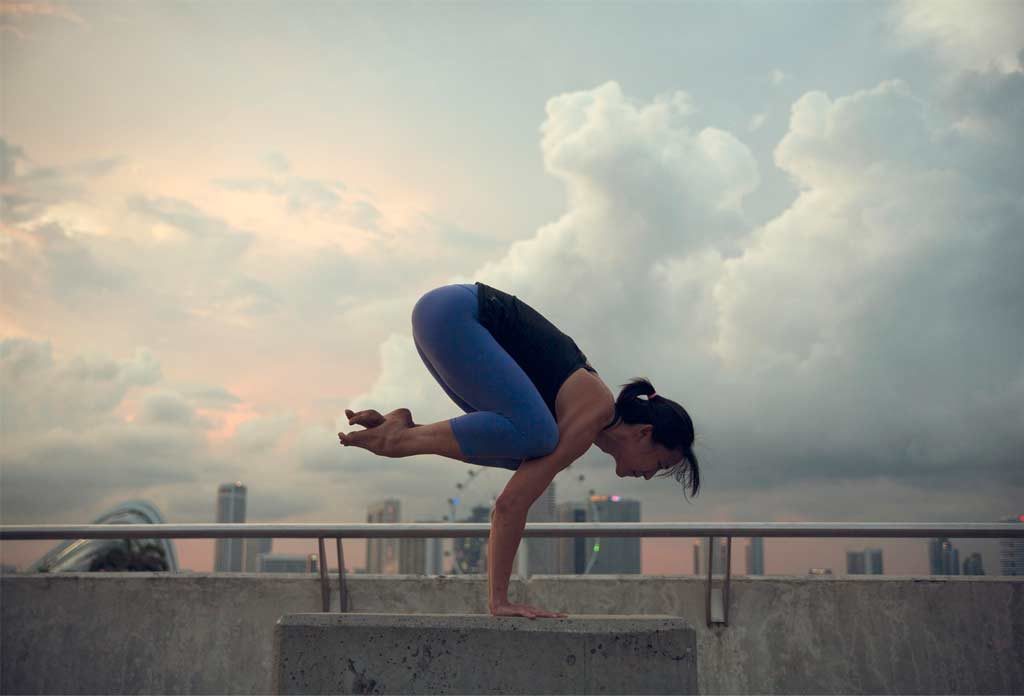Not your average workout routine.
In our heads, we usually associate ‘Yoga’ with an activity for older people. All of us are aware that it involves some form of stretching combined with spirituality, and that certainly spells a no-no for the Gen Z. Why practice complicated postures to lose weight when you can just as easily jump onto a treadmill, blaring headphones playing your favourite tunes and possibly drop kilos faster?
You’re missing the point.
Born in India, almost 26,000 years ago, Yoga is believed to have evolved during the period of the ‘Sat Yuga’, also called the Golden age. Being a Sanskrit word, Yoga has several translations and can be interpreted in many ways. Essentially, Yoga has come to describe a means of uniting, or a method of discipline. A male who practices this discipline is called a yogi or yogin; a female practitioner, a yogini.
1. The 3 pillars
The whole system of Yoga is built on three main structures: exercise, breathing, and meditation. The exercises of Yoga are designed to put pressure on the glandular systems of the body, thereby increasing its efficiency and total health. The body is looked upon as the primary instrument that enables us to work and evolve in the world, and so a Yoga student treats it with great care and respect. Breathing techniques are based on the concept that breath is the source of life in the body.
The Yoga student gently increases breath control to improve the health and function of both body and mind. It is said that the longer you spend for each breathing cycle (complete exhalation +pause + complete inhalation + pause + complete exhalation), the longer you live.
These two systems of exercise and breathing then prepare the body and mind for meditation, and the student finds an easy approach to a quiet mind that allows silence and healing from everyday stress. Regular daily practice of all three parts of this structure of Yoga produce a clear, bright mind and a strong, capable body.
2. Hatha Yoga
Initially, the discipline of Hatha Yoga—the physical aspect of Yoga—was developed as a vehicle for meditation. The repertoire of Hatha Yoga prepared the body, and particularly the nervous system, for stillness, creating the necessary physical strength and stamina that allowed the mind to remain calm. Hatha Yoga is a powerful method of self-transformation. It is the most practical of the Yogas, and sages have recommended its practice in some form for millennia as preparation for all the other Yogas.
3. Harmony
Yoga is commonly understood as a therapy or exercise system for health and fitness. While physical and mental health are natural consequences of Yoga, the goal of Yoga is far-reaching. It is said that Yoga is about harmonizing oneself with the universe. It is a manner of aligning individual geometry with the cosmic, to achieve the highest level of perception and harmony.
4. The common belief that Yoga derives from Hinduism is a misconception.
Yoga actually predates Hinduism by many centuries. Ancient seals unearthed in the Indus Valley provide clear evidence of widespread Yoga practice earlier than 3,000 B.C.E. The techniques of Yoga have been adopted by Hinduism as well as by other world religions. Yoga is not a religion. It has no creed or fixed set of beliefs, nor is there a prescribed godlike figure to be worshipped in a particular manner.
As an eighteen year old, I had the standard ‘Yoga is for oldies!’ approach to the system of Yoga. More so, I believed ‘gym’ was the answer to all weight troubles. That is until I joined a 10-day Yoga class, with the condition that I would certainly lose some weight at the end of it. But what I didn’t know was how Yoga would help me drop not just my weight but also many negative connotations that I carried about life. Yoga invokes in you a kind of optimism that cannot be washed away with mere words or water. The regular practice of this art changes you for good, makes you feel more composed, and many say, even a better person.












